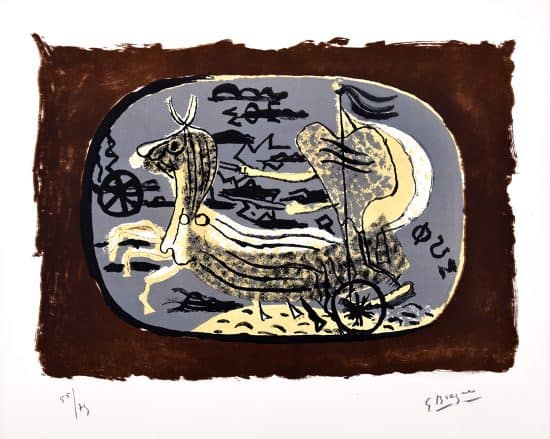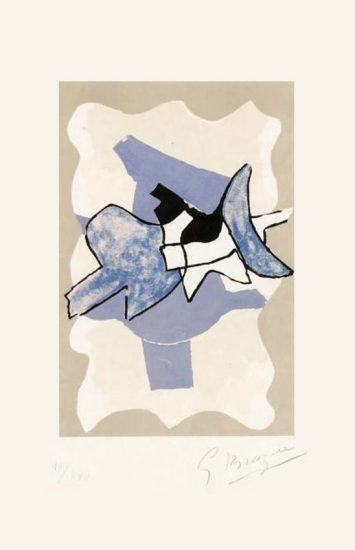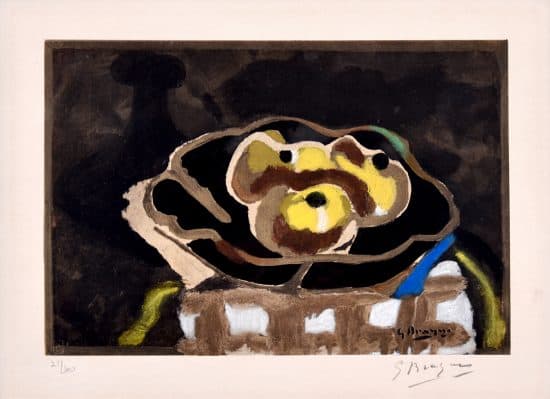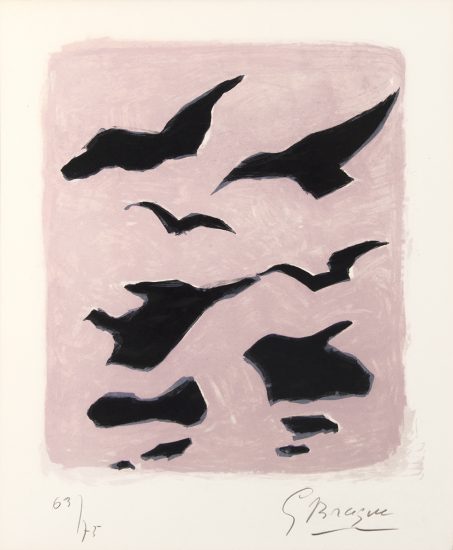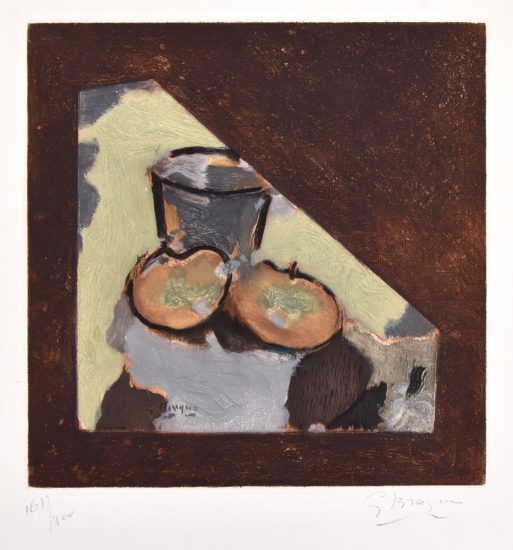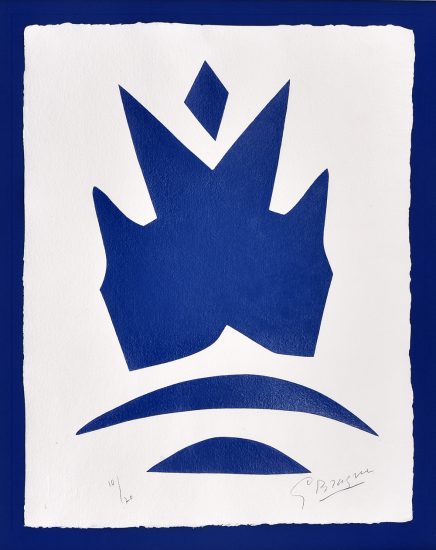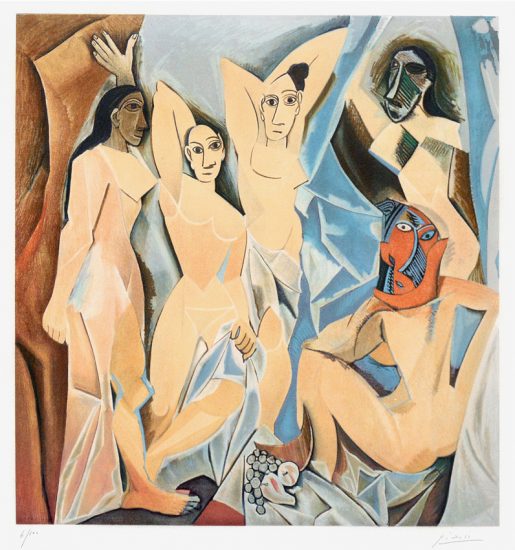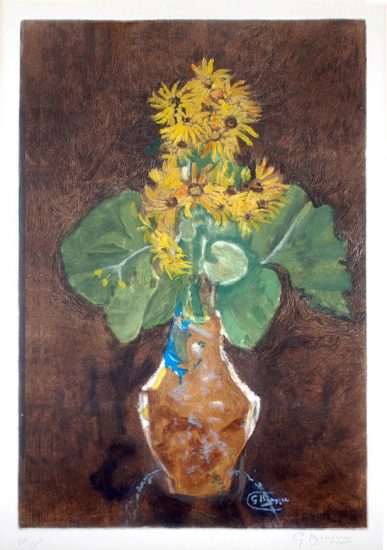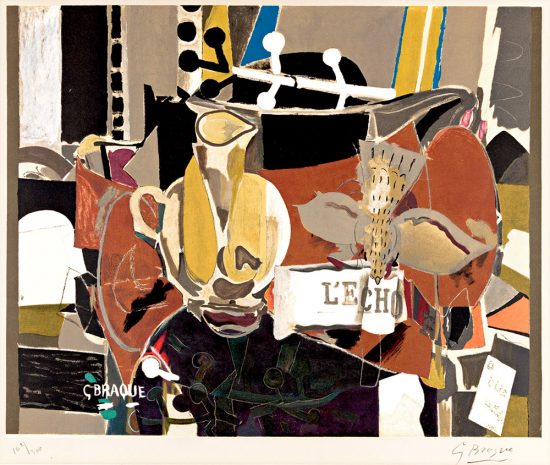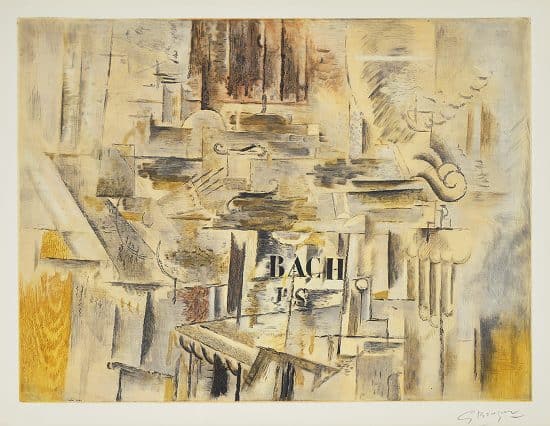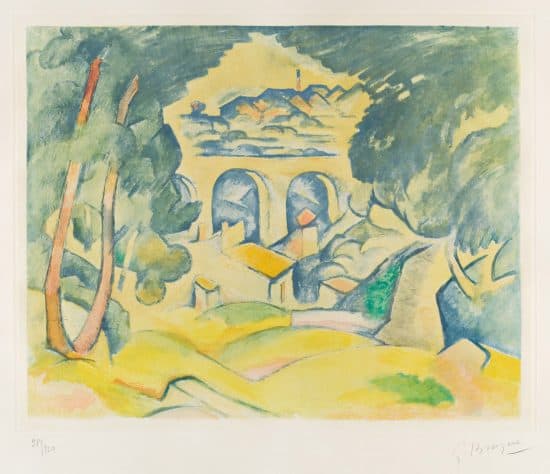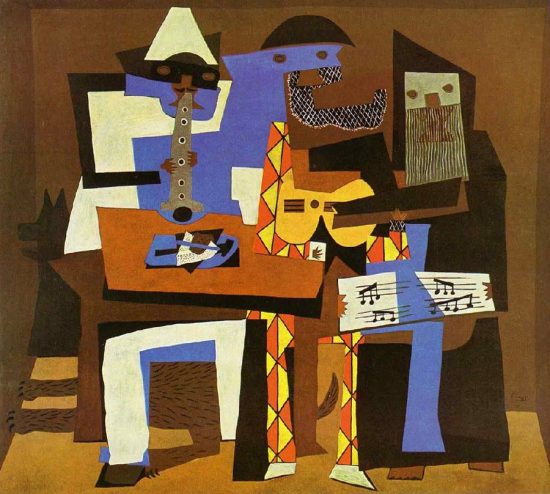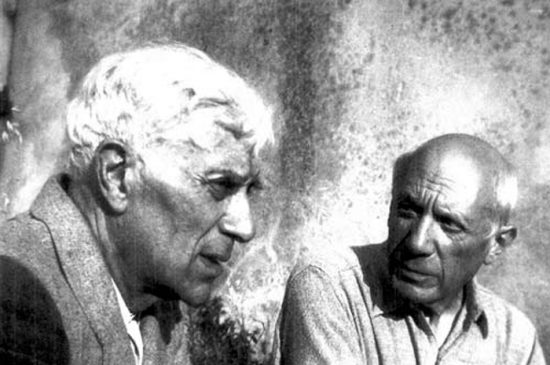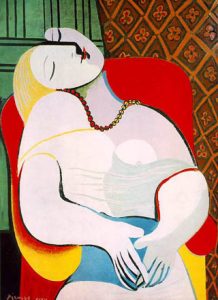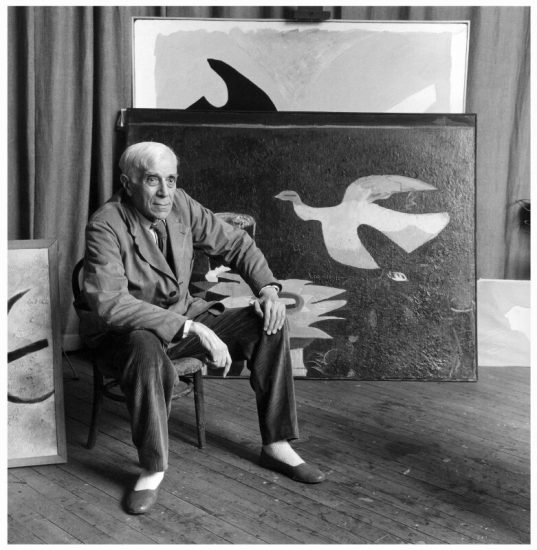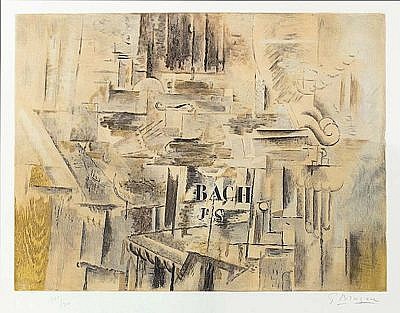
Pablo Picasso and George Braque developed one of the most famous art movements in art history known as Cubism. Cubism, from 1907 - 1979, was new approach to representing reality on the canvas.
The Cubism art movement was developed relatively rapidly between 1907 and 1914 as a return to realism in painting. At first, it was a uniquely Parisian phenomenon, lasting until around 1912. The style was originally developed in conjunction by Georges Braque and Pablo Picasso. The pair was introduced in 1907 by Apollinaire, French poet, and they started working together almost daily. One of the central tenants of cubism was the move away from traditional ideas of perspective, and instead seeking to combine multiple perspectives into one image. This was done by breaking an object down into planes, and therefore the multiple perspectives would get across the idea of three-dimensionality without depicting any depth in the canvas. Another part of the cubist style was to highlight the two-dimensional nature of the canvas. Cubism got its name from critic Louis Vauxcelles, who in describing a Braque painting used the term “cubes” to talk about the geometric composition.
Two types of cubism emerged – Analytic Cubism was the first from 1910-1912. This style of cubism was so highly abstracted and in such a monochrome palate (of browns and grays), that it became harder and harder to depict the subject than in earlier cubist works. In synthetic cubism, a step was taken away from the abstract with the creation of papiers collés which integrated pasted paper into the paintings. The paper often included newspaper clippings with words on them. Synthetic cubism also utilized a brighter palate.
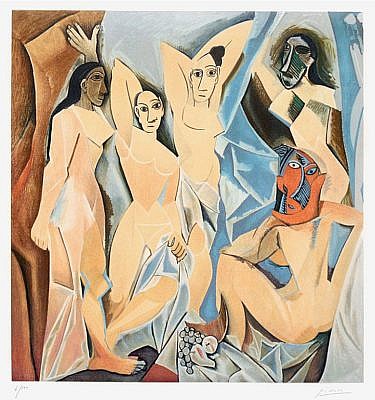
Picasso’s Les Demoiselles d’Avignon is typically thought of as the start of the cubist style. The piece has some of the markers, including multiple perspectives which are particularly noticeable in the faces of the women. The women are facing frontally, but some of their noses have been depicted in profile, giving two perspectives on one face.
References:
- "Cubism." Tate. Accessed February 7, 2017. http://www.tate.org.uk/learn/online-resources/glossary/c/cubism#introduction
- Fry, Edward F. Cubism. Thames and Hudson Ltd: London, 1966.
- Rewald, Sabine. "Cubism." The Metropolitan Museum of Art. Accessed February 7, 2016. https://www.metmuseum.org/toah/hd/cube/hd_cube.htm
- Browse Masterworks collection of Picasso lithographs.

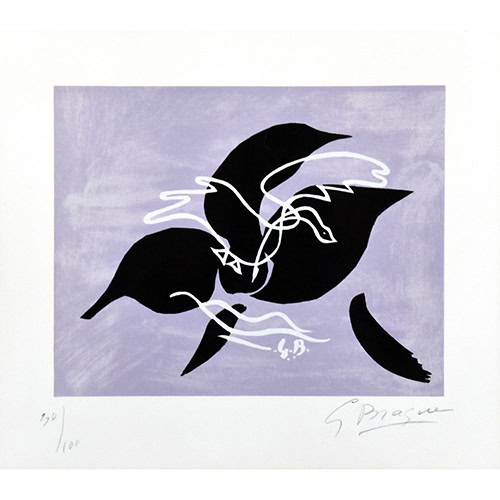
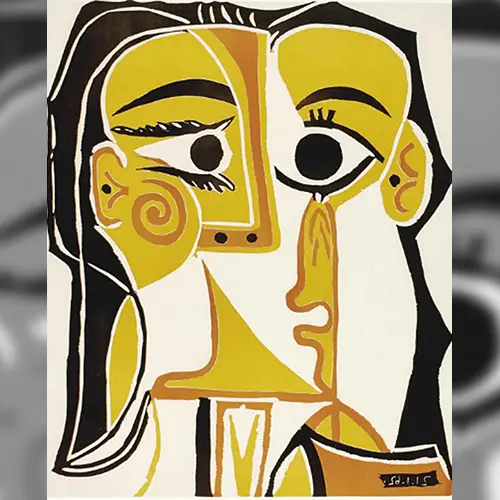
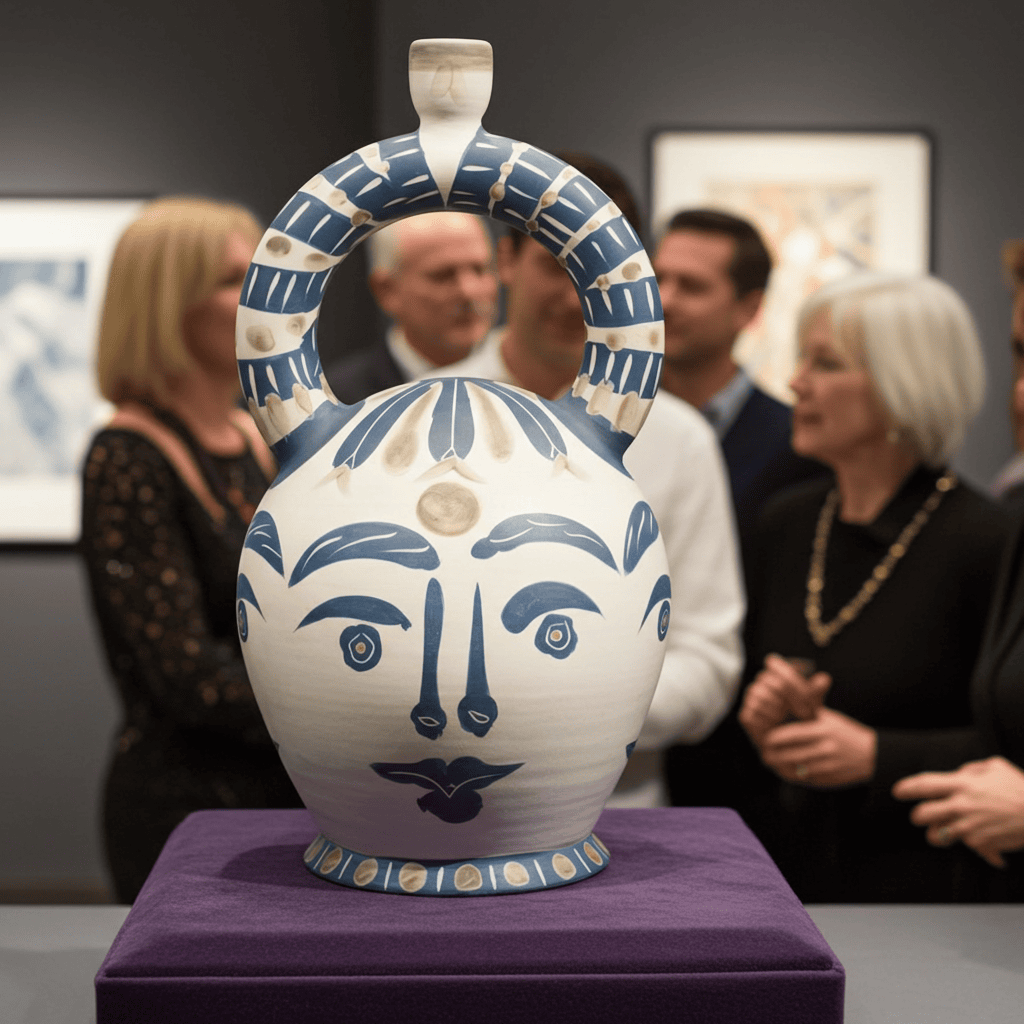
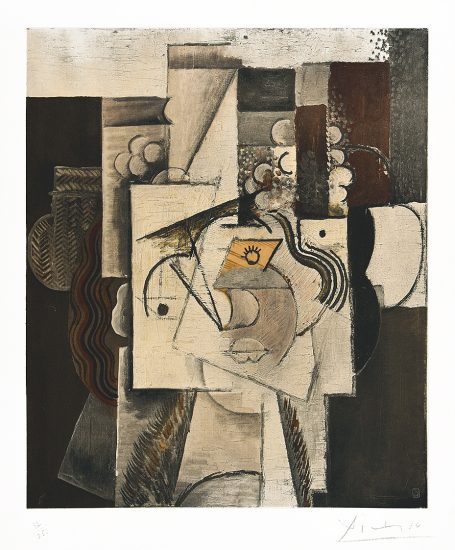
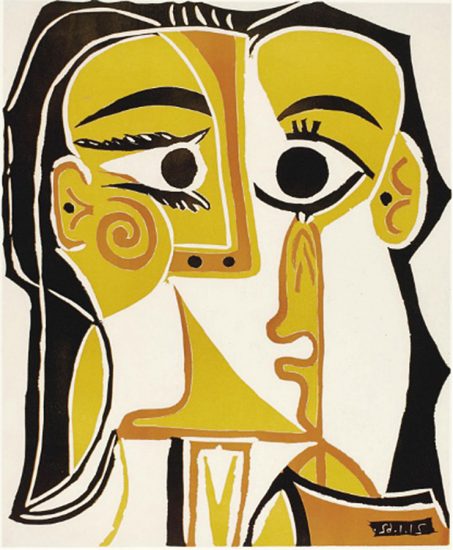
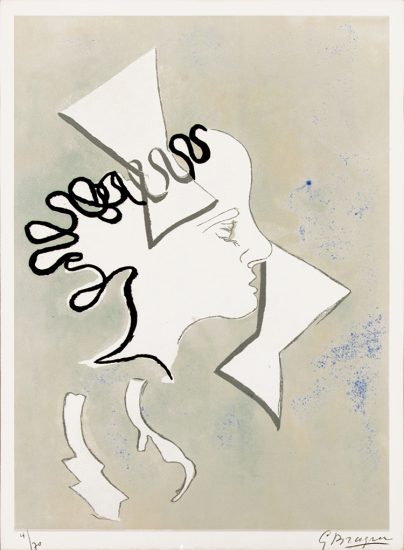

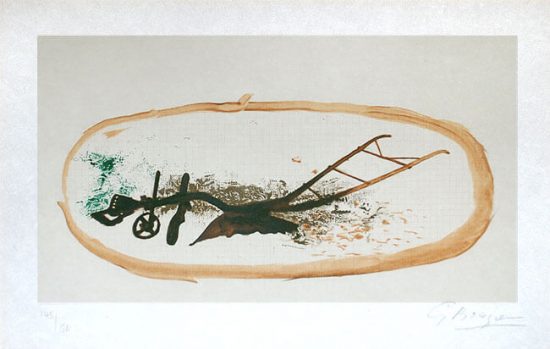
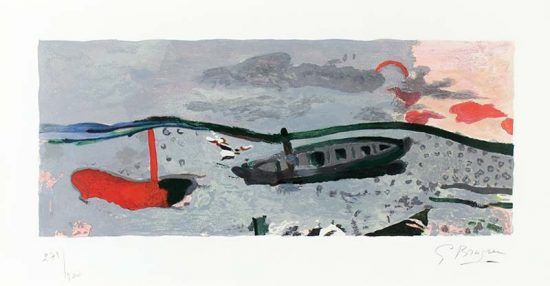
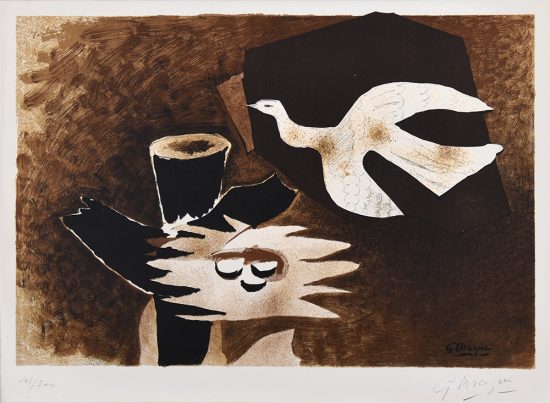
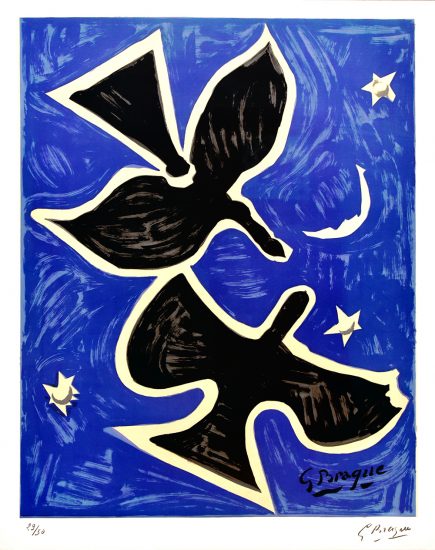
![Georges Braque Lithograph, Nature morte (avec un pichet et citrons) [Still Life with Pitcher and Lemons], c.1950](https://images.masterworksfineart.com/braque2243-550x420.jpg)
